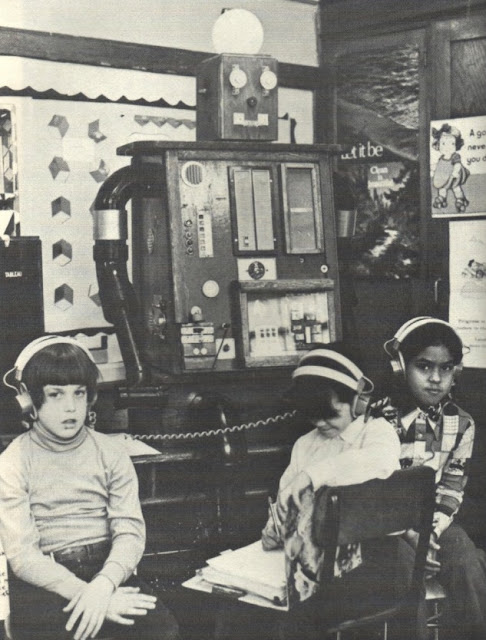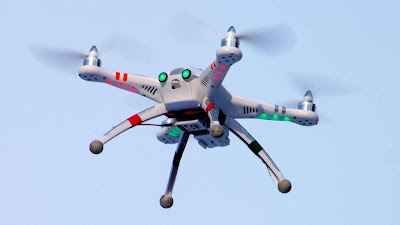Introduction to Robotics - Robotics for Beginners
What is a robot ? - The very first thought that comes in our head but we do not always ask it to the ones around.
What is robotics ? What is robot ? What is robot definition ?
This article will clear all your doubts about robots and robotics and give you clear idea about robotics engineering.
Robotics is a branch of engineering that involves the conception, design, manufacture, and operation of robots. This field overlaps with electronics, computer science, artificial intelligence, mechatronics, nanotechnology, and bioengineering.
The use of first robot word could be traced way back to 1921.
Robot was coined by Czech playwright Karl Capek in his play R.U.R (Rossum's Universal Robots), which opened in Prague in 1921. Robota is the Czech word for forced labor.
Robot was coined by Czech playwright Karl Capek in his play R.U.R (Rossum's Universal Robots), which opened in Prague in 1921. Robota is the Czech word for forced labor.
 |
| Early Robotics, Early robots |
The
term robotics was introduced by writer Isaac Asimov. In his science fiction book
I, Robot, published in 1950, he presented the laws of robotics. The same laws of robotics have been the core of robotic engineering and various worldwide advanced robotics projects.
There are three laws of robotics:
There are three laws of robotics:
1. A robot may not injure a human being, or, through inaction, allow a human being to come to harm.
2.
A robot must obey the orders given it by human beings except where such orders
would conflict with the First Law.
3.
A robot must protect its own existence as long as such protection does not
conflict with the First or Second Law.
The
concept of creating machines that can operate autonomously dates back to
classical times, but research into the functionality and potential uses of
robots did not grow substantially until the 20th century. Throughout
history, robotics has been often seen to mimic human behavior, and often
manage tasks in a similar fashion.
Today,
robotics is a rapidly growing field, as technological advances continue;
researching, designing, and building new robots serve various practical
purposes, whether domestically, commercially, or militarily. Many robots do
jobs that are hazardous to people such as defusing bombs, mines and exploring
shipwrecks.
 |
| Flying robot - quadcopter |
Fully
autonomous robots only appeared in the second half of the 20th century. The
first digitally operated and programmable robot, the Unimate, was installed in
1961 to lift hot pieces of metal from a die casting machine and stack them.
Commercial and industrial robots are widespread today and used to perform jobs
more cheaply, or more accurately and reliably, than humans.
There are various robotics projects going on around the world, most of which are military robotics projects or industrial robots. Many case studies of robots are also included in robotic engineering.
There are various robotics projects going on around the world, most of which are military robotics projects or industrial robots. Many case studies of robots are also included in robotic engineering.
They
are also employed in jobs which are too dirty, dangerous, or dull to be
suitable for humans. Robots are widely used in manufacturing, assembly, packing
and packaging, transport, earth and space exploration, surgery, weaponry,
laboratory research, safety, and the mass production of consumer and industrial
goods.
You may be interested in some DIY robotics. If starting fresh, exploring various robots areas like robotic arm, also called as robotic hand or robot arm by many people, humanoid robot, ro bot may help you in introduction to robotics and knowing what is robotics exactly.
You may be interested in some DIY robotics. If starting fresh, exploring various robots areas like robotic arm, also called as robotic hand or robot arm by many people, humanoid robot, ro bot may help you in introduction to robotics and knowing what is robotics exactly.
Robotic
Aspects
There
are many types of robots; they are used in many different environments and for
many different uses, although being very diverse in application and form they
all share three basic similarities when it comes to their construction:
1.
Robots have some kind of mechanical construction, a frame, form or shape
designed to achieve a particular task. For example, a robot designed to travel
across heavy dirt or mud, might use caterpillar tracks. The mechanical aspect
is mostly the creator's solution to completing the assigned task and dealing
with the physics of the environment around it.
Robot games are very popular among children, teenagers and adults. The idea of a robot doing stuff on its own fascinates everyone.
Robot games are very popular among children, teenagers and adults. The idea of a robot doing stuff on its own fascinates everyone.
2.
Robots have electrical components which power and control the machinery. For
example, the robot with caterpillar tracks would need some kind of power to
move the tracker treads. That power comes in the form of electricity, which
will have to travel through a wire and originate from a battery, a basic
electrical circuit. Even gas powered machines that get their power mainly from
gas still require an electrical current to start the gas using process which is
why most gas powered machines like cars, have batteries.
 |
| Line Follower Robot |
The
electrical aspect of robots is used for movement (through motors), sensing
(where electrical signals are used to measure things like heat, sound,
position, and energy status) and operation (robots need some level of
electrical energy supplied to their motors and sensors in order to activate and
perform basic operations)
Robotic industries like abb robotics are highly appreciated as they are quite advanced robotics machinery.
Vex robotics serves as a good platform for any beginner in robotics.
Robotic industries like abb robotics are highly appreciated as they are quite advanced robotics machinery.
Vex robotics serves as a good platform for any beginner in robotics.
3.
All robots contain some level of computer programming code. A program is how a
robot decides when or how to do something. In the caterpillar track example, a
robot that needs to move across a muddy road may have the correct mechanical
construction, and receive the correct amount of power from its battery, but
would not go anywhere without a program telling it to move. Programs are the
core essence of a robot, it could have excellent mechanical and electrical
construction, but if its program is poorly constructed its performance will be
very poor or it may not perform at all. There are three different types of
robotic programs: remote control, artificial intelligence and hybrid.
A
robot with remote control programming has a pre existing set of commands that
it will only perform if and when it receives a signal from a control source,
typically a human being with a remote control. It is perhaps more appropriate
to view devices controlled primarily by human commands as falling in the
discipline of automation rather than robotics. Robots that use artificial
intelligence interact with their environment on their own without a control
source, and can determine reactions to objects and problems they encounter
using their pre existing programming. Hybrid is a form of programming that
incorporates both AI and RC functions.
Among many robotics fields, you may get stuck in a very popular question which is - how to make a robot ?
Or, where to buy robot kits for making robotics projects?
Or, saving money to buy robotics kits online ?
Or, buying used robots for sale available around.
Well, buying robots for kids is fun and full of learning for them as well as quite a big risk as they may swallow some part or hurt themselves from any of its parts. Precaution should be taken while going ahead with robotics for kids.
Among many robotics fields, you may get stuck in a very popular question which is - how to make a robot ?
Or, where to buy robot kits for making robotics projects?
Or, saving money to buy robotics kits online ?
Or, buying used robots for sale available around.
Well, buying robots for kids is fun and full of learning for them as well as quite a big risk as they may swallow some part or hurt themselves from any of its parts. Precaution should be taken while going ahead with robotics for kids.
The
state of the art in sensory intelligence for robots will have to progress
through several orders of magnitude if we want the robots working in our homes
to go beyond vacuum-cleaning the floors. If robots are to work effectively in homes
and other non-industrial environments, the way they are instructed to perform
their jobs and especially how they will be told to stop will be of critical
importance. The people who interact with them may have little or no training in
robotics, and so any interface will need to be extremely intuitive. Science
fiction authors also typically assume that robots will eventually be capable of
communicating with humans through speech, gestures, and facial expressions,
rather than a command-line interface. Although speech would be the most natural
way for the human to communicate, it is unnatural for the robot. It will
probably be a long time before robots interact as naturally as the fictional
C-3PO.
The
mechanical structure of a robot must be controlled to perform tasks. The
control of a robot involves three distinct phases – perception, processing, and
action (robotic paradigms). Sensors give information about the environment or
the robot itself (e.g. the position of its joints or its end effectors). This
information is then processed to be stored or transmitted, and to calculate the
appropriate signals to the actuators (motors) which move the mechanical.
 |
| Humanoid Robot - ASIMO Robot |
The
processing phase can range in complexity. At a reactive level, it may translate
raw sensor information directly into actuator commands. Sensor fusion may first
be used to estimate parameters of interest (e.g. the position of the robot's
gripper) from noisy sensor data. An immediate task (such as moving the gripper
in a certain direction) is inferred from these estimates. Techniques from
control theory convert the task into commands that drive the actuators.
Making your first Robot ?
Most robot parts are available online, simply search for buy robots online or buy robotics parts online and many robots shop links are available to choose from.
Some people have also uploaded their robotic hand or robotic arm videos on the YouTube website and you may take ideas for your robotic project from there or follow the robotic tutorials on how to make robot and make cool robots by yourself.
Go ahead, Do It Yourself.
At
longer time scales or with more sophisticated tasks, the robot may need to
build and reason with a "cognitive" model. Cognitive models try to
represent the robot, the world, and how they interact. Pattern recognition and
computer vision can be used to track objects. Mapping techniques can be used to
build maps of the world.
Finally,
motion planning and other artificial intelligence techniques may be used to
figure out how to act. For example, a planner may figure out how to achieve a
task without hitting obstacles, falling over, etc.
Robotics
engineers design robots, maintain them, develop new applications for them, and
conduct research to expand the potential of robotics. Robots have become a popular
educational tool in some middle and high schools, as well as
in numerous youth summer camps, raising interest in programming, artificial intelligence
and robotics among students. First-year computer science courses at several
universities now include programming of a robot in addition to traditional software
engineering-based coursework. On the Technion I&M faculty an educational
laboratory was established in 1994 by Dr. Jacob Rubinovitz.
Humanoid robots like Honda Asimo robot have changed the way humans interact with robots. It appears and operates like a human, therefore also called human robot. The robots of future will not be some ugly machine which you have to oil and power. In fact, robots of future would be much flexible and understanding. Asimo robot can even recognize body expressions and 20 voice recognition commands.
What do you think about robotics ?
Have a question ? Feel free to ask.
Humanoid robots like Honda Asimo robot have changed the way humans interact with robots. It appears and operates like a human, therefore also called human robot. The robots of future will not be some ugly machine which you have to oil and power. In fact, robots of future would be much flexible and understanding. Asimo robot can even recognize body expressions and 20 voice recognition commands.
What do you think about robotics ?
Have a question ? Feel free to ask.














